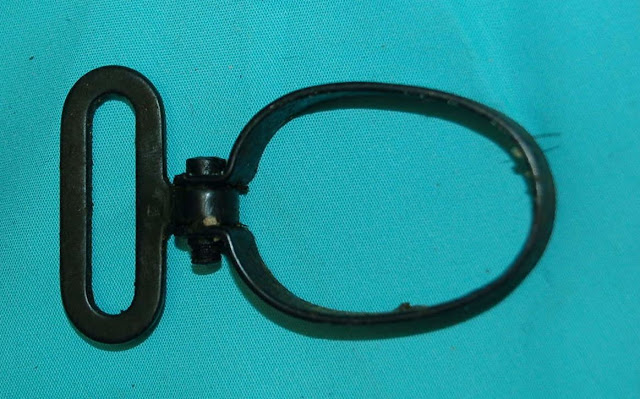When restoring a military rifle back to original configuration you need to make a decision. Do you want it to look as it was issued or as it was returned after battle? You could also choose to restore it to the way it may have come from the arsenal.
For my personal taste I prefer to leave the guns as they were shipped after the war. Of course it is impossible to tell which scrapes, dings and scars came from battle and which ones came from shipping, but I still like the thought of the gun looking like it did when it left the hands of its GI.
As far as the authenticity or originality of the parts, there is a debate about that. After (and even during) the war many guns were repaired, refinished and rebuilt using whatever parts were available. This means your Remington could have a Springfield Armory or Smith-Corona stock on it. It could have a different bolt, barrel or floor plate.
I will not be consumed trying to find the correct Remington parts, if I find them great, if not I'll take what I can find at a reasonable price.
When searching for a stock for my '03-A3, I discovered that there are a lot of options:
- Original Remington 1903A3, used
- Original Remington 1903A3 unissued
- Original Springfield 1903 used (in straight, scant and C style, need to use the '03A3 hand guard though)
- Original Springfield 1903 unissued (in straight, scant and C style)
- New Aftermarket reproduction
- New CMP reproduction
I was able to find an original type 12 scant stock on ebay, but it came with no parts
"No parts" means that I am not done shopping.
The required parts list includes:
- trigger guard/floor plate - already have
- butt plate - already have
- recoil lug bolts - came in the stock
- rear sling swivel - already have
- upper hand guard
- upper hand guard retaining ring
- large (rear) stock band & swivel
- locking spring for the large stock band
- small (front) stock band and stacking swivel
- bayonet lug and screw
I also found an NOS Remington marked large barrel band on ebay
Another ebay find, this one the hand guard. These NOS units were being sold by someone in Greece.
A super nice guy on WAGuns provided me with some parts that I needed: the hand guard ring and the stacking swivel.
I was lucky in that most all the parts I found were stamped with the R for Remington.
I purchased one of these National Match slings from the Springfield Armory, they are supposed to be a close copy of the originals.... the hardware is painted steel which is actually correct for a WWII M1907 sling. The slings with the brass hardware were used during WWI and may have been issued in the beginning of WWII, but for a 1943 issued rifle and sling, they would have black steel hardware.
Later in the war the armory would have issued whatever they had available, so just about any of the USGI slings could be period correct.
These came in a "natural" color I was planning to dye them with leather dye.
After doing more research I found these guys At The Front, they make authentic reproductions, by hand, right here in the USA. I probably should have bought one of their slings...but oh well, maybe next time?
They did offer some advice on getting a darker color on the slings. The slings were issued in the natural color, but things like exposure to the sun, oil/grease from servicing the rifle, dirt and oil from the soldiers hands and any protective oils, applied over the years, darkened the material.
They suggested exposure to the sun and applying Neats foot oil to slings to help darken (and soften) them.
I followed their suggestions in darkening the leather on my sling. I left it in the sun for a few hours, then applied multiple coats of Fiebing Neatsfoot oil
Here is the final result, next to the matching sling I bought for my M1.
When it comes to a correct 1943 bayonet, I had to do some research. The original M1905 bayonet used on the M1903 Rifle had a 16" blade. When the M1 was adopted the M1905 bayonet was redesigned with a 10" blade and dubbed the M1 bayonet.
In 1943 the M1905 was recalled, shortened to 10" and re-issued as the M1905E1. So the M1 or the M1905E1 would be correct for a 1943 vintage M1903A3 rifle like mine.
I bought this bayonet a few years back for my M1, I am not not sure what model it is, the roll marks are all but gone, a victim of an arsenal rebuilt perhaps?
Now that we have all the parts we get to assemble Betty, (aren't you suppose to give your military rifle a nickname?) we'll get to bringing her back to her former glory.
References
TR Findley
At The Front
Antique Outings
US Military Knives















